Editorial
From Dodging Air Strikes To Glam Slam Success: The Journey Of Ana Ivanovic
Published
7 years agoon

Ana Ivanovic pictured with the French Open trophy in 2008 (zimbio.com)
Since making her WTA Tour debut at the age of 15 in 2003, Ana Ivanovic has managed to win over the hearts of tennis fans with her contagious smile that has lightened up the tour in recent years.
Born in Belgrade on November 6th, 1987, Ivanovic’s desire to play tennis began at the age of five when she was inspired by watching her idol Monica Seles on TV. Training to be a professional player in Serbia was tough going for Ivanovic and her fellow teammates. At a young age, she had to schedule her practice sessions around air strikes bombarding her country in Nato’s 78-day military campaign during the 1999 Kosovo crisis. Hindered by a lack of adequate training facilities in her homeland, she had to resort to practising her tennis skills in an empty swimming pool.
“The pool was old, leaking and too expensive to heat, so they emptied it, put carpet inside and made two tennis courts.” Ivanovic recalled.
Like many other young tennis players, Ivanovic was struggling to generate enough money to support her dream. Her fortunes changed thanks to a Swiss businessman with a passion for tennis. Dan Holzman took a risk in 2002 and agreed to provide a teenage Ivanovic with a £250,000 interest-free loan to kick-start her career. It was a gamble taken by Holzman, but one that paid off.
“Ana always knew that the first £250,000 she earned had to come to me,” said Holzman.
“Of course, I never took all her prize money as she needed to live. But she has now repaid me every penny. Ana is not my only business, and I don’t pay my rent through her, but I cannot think I’ve ever made a better business deal.”
The payment was both a gift and a burden for the Serbian. At the age of 15 she spent four hours crying following a loss, fearing that Holzman would stop his investment. Fortunately the Swiss businessman never stopped believing as Ivanovic began to blossom. She first grabbed the attention of the world’s media in 2004 when she reached the final of the Wimbledon girls tournament, losing to Kateryna Bondarenko.
Ivanovic’s Wimbledon experience lead to her making waves on the pro circuit later that year. After winning back-to-back ITF $50,000 titles, she stunned world No.29 Tatiana Golovin in the first round of the Zurich Open before falling to Venus Williams in straight sets. Within 12 months she rose 600 places in the WTA Rankings, finishing 2004 ranked 97th in the world.
The promise and talent shown by Ivanovic were witnessed by all, but there were still issues with consistency in the coming years. Her first WTA title occurred in 2005 followed by her first grand slam quarter-final appearance at the French Open.
Since reaching her maiden quarter-final at Roland Garros, Ivanovic has enjoyed a love affair with the French Open. It was the venue where she reached her first major semifinal (2007) and her last (2015). The highlight of her affair occurred in 2008 when she became the first and so far only Serbian woman since her country’s independence in 1992 to win a grand slam title. Facing Russia’s Dinara Safina in the final, she disposed of her in straight sets to win the title in Paris. The triumph elevated Ivanovic to the world No.1 ranking, a position that she held for 12 weeks throughout her career.
As Ivanovic rose on the tour, so did her rapidly expanding fan base. Her infectious smile with her aggressive baseline playing style proved to be a winning combination. Even when she experienced setbacks in her roller coaster career, the Ivanovic army remained loyal to their leader.
The 2008 French Open triumphed turned out to be a one-off for Ivanovic as she would battle with consistency throughout the rest of her career. Just over a year after winning her only major title, she dropped out of the world’s top 20 before staging a comeback in 2010. It was a somewhat frustrating situation for the Serbian, but she never gave up on her dream throughout.

Graph illustrating Ana Ivanovic’s ranking performance since 2008
Between 2012-2015 the 29-year-old managed to remain inside the world’s top 20. During that three-year period she reached two grand slam quarter-finals as well as one semifinal. On the WTA Tour Ivanovic won four titles in 2014, including what would be the last of her career at the Pan Pacific Open in Tokyo, Japan.
Ultimately, it was Ivanovic’s desire for perfection that resulted in her downfall. Throughout her final season on the tour, a troublesome wrist injury halted her success as she only managed to win 15 matches. A bitter first round exit to Denisa Allertova at the US Open proved to be Ivanovic’s final match as ongoing injury woes pulled the curtain on her final season.
“It has been well known that I have been hampered by injuries. I can only play if I am up to my own high standards and I can no longer do that, so it’s time to move on.” Ivanovic said about her retirement.
In years to come Ivanovic might not be remembered as one of the all-time greats of the game. Nevertheless, it was her attitude, charisma and interaction with the public that has earned her the respect and admiration of thousands. Ivanovic’s performance was uneven throughout her career, but her passion never fluctuated.
From scheduling practising between air strike’s to reaching number one in the world, Ana Ivanovic has demonstrated how athletes can blossom after getting off to a tentative start. It is for this reason why she will be missed on the tour by many.
The career of Ana Ivanovic:
– 705 matchs with professional
– 480 victories
– 15 titles
– 1 Grand Slam
– N°1 of the World #Tennis 🎾#WTA pic.twitter.com/i0jEO1JFgf— Ana Ivanovic ARG (@AnaIvanovicAR) 28 December 2016
You may like
Editorial
Statistical Deep Dive: Sinner At Rotterdam One Year Later
Jannik Sinner’s Rotterdam title compared with his run to the final last year.
Published
2 months agoon
04/03/2024
By Federico Bertelli
Let’s delve into Jannik Sinner’s triumphant journey at the ABN Amro Open and compare it with his 2023 campaign. Service and down-the-line backhands were the keys to victory.
Harder, Better, Faster, Stronger. This is the version of Sinner that his opponents tasted, and it’s also the title of a Daft Punk song; the clip particularly reflects what the rest of the ATP circuit has been thinking about Jannik for some months now: an android emerging after a heavy upgrade. Jokes aside, as the sunshine double is about to start, we thought it wise to rewind and closely examine Sinner’s recent victories.
The focus of our analysis is the Rotterdam tournament: Sinner’s performance was spotless, a feat not seen since 2001 when Lleyton Hewitt, after his victory at Flushing Meadows over Pete Sampras, managed to repeat his success in Tokyo. If the Italian were to win next week under the California sun as well, he would be the first in ATP tennis history to win two consecutive ATP tournaments after the first Slam. But before we dive into the action of the Indian Wells, let’s scratch the surface of Sinner’s victory in the Netherlands a bit. The comparison is plausible as the Italian reached the final in both editions, playing 5 matches in each case.
Draw: The 2024 run was undoubtedly smoother compared to 2023, both on average and in absolute terms. In 2023, the average ranking of Sinner’s opponents increased significantly, from 50.6 in 2023 to 97 in 2024. This means that, in general, we can assume that the journey, at least on paper, was easier. Also, in absolute terms – considering the lowest ranking of an opponent faced – there was a notable difference. In 2023, the insurmountable obstacle was the Russian Medvedev, then the blue’s nemesis and number 3 in the rankings. In 2024, it was a more approachable De Minaur – number 11 in the ATP ranking – against whom the H2Hs have also always been in favour of Jannik.
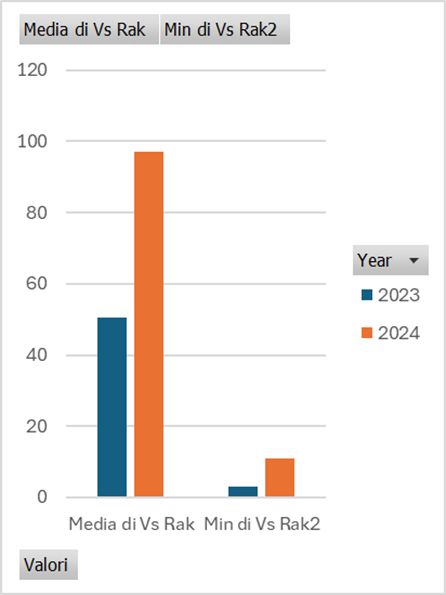
Break Points: One aspect frequently discussed about Sinner in the last 12 months is his overall growth in all areas: technical, physical, and mental. However, it’s not news that Jannik is mentally tough. Surely, Sinner will continue to tirelessly work on this aspect, as he has always stated, but his starting base has always been enviable. And the results are there for everyone to see. Despite facing a number of break points in the tournament equal to 20 in both 2023 and 2024 – which perhaps was unexpected given the more modest caliber of opponents – the Italian’s response was undeniable. An 80% break point save rate, compared to 65% in 2023 and against an ATP tour average of 61%. (Note: The tour average refers to the average of the last 52 weeks of players who have competed in ATP level tournaments). This figure, among other things, underscores Jannik’s solidity, already above average in 2023.

Service – Overall Statistics: Another aspect that has been frequently discussed is Jannik’s improvement in his service game; indeed, the data speaks for itself. Both in terms of the percentage of first serves in play and in terms of effectiveness in converting such a play situation into a point, Sinner has significantly elevated his game. Working on the percentage of first serves in play was the number one priority to improve the Italian’s game performance, and the efforts of Vagnozzi, Cahill & co. have paid off handsomely. In 2023 in Rotterdam, the percentage of first serves in play was 57%, in line with the general performances recorded by Sinner up to that point. Considering that the ATP tour average was 62%, it’s clear this was an aspect still needing improvement until last year. However, the conversion rate from good became excellent. In 2023 in Rotterdam, the conversion rate of points on the first serve stood at 74%, a figure above the tour average, which is at 72%. In 2024, however, we witnessed a further leap forward, reaching the 80% threshold.
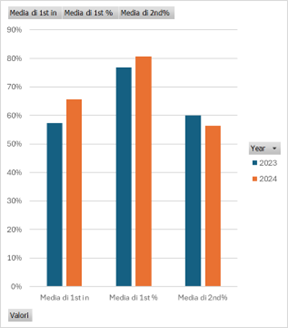
To understand how high this figure is, just look at the leaderboard rankings of the last 52 weeks. In terms of first serves converted into points, 80% is the threshold of absolute excellence. Consider that the two most impressive serving machines ever seen on a tennis court, Karlovic and Isner, had career averages of 83% and 80%, respectively.
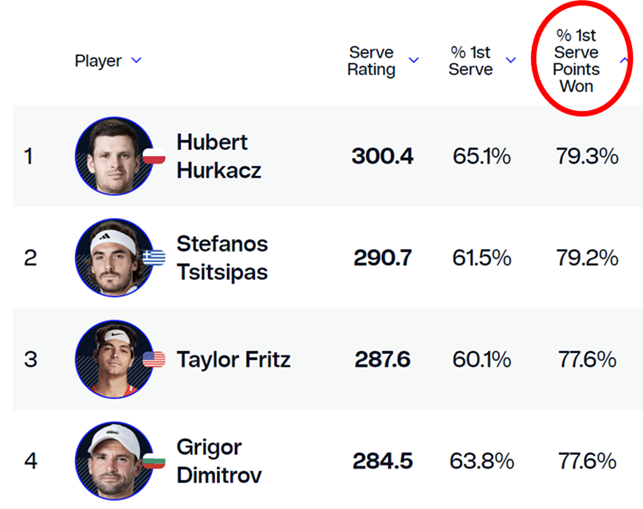
Finally, a somewhat surprising data point is the success performance on the second serve. The Italian won 60% of the points on his second serve in 2023, while in 2024, “only” 56%. This rate is evidently more than sufficient to win matches and tournaments, but in 2023, it was not a problem at all, on the contrary.
Delving further into detail and referring to more detailed analyses (for the metrics used, we also refer to the general description found here), the analysis is further enriched. The data reported are the result of TennisViz processing, on data owned by Tennis Data Innovations (TDI).
Service – Detailed Data: The service performance, in terms of precision and reliability of the shot under pressure, has improved from all perspectives. Among the various metrics available, there are some of interest. Starting with the accuracy on the first serve, i.e., the distance with which the serve is placed from the service lines, measured in cm. Referencing a post from the X Tennis Insights account, we have an overview.
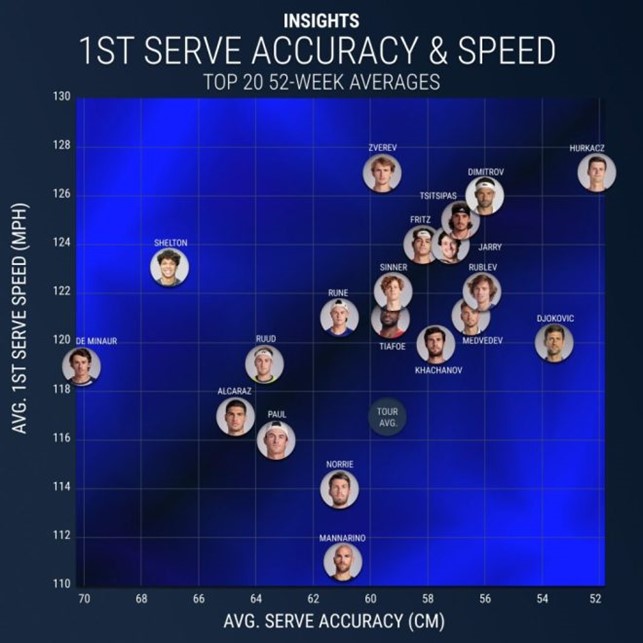
In Rotterdam in 2023, Sinner executed this shot with an accuracy of 57 cm, better than what was measured over the course of the year. But in 2024, this figure impressively dropped to a notable 52 cm, in line with that of Hurkacz. We’ll spare you the statistical details, but the result (highly debatable, given the small sample size) is as follows.
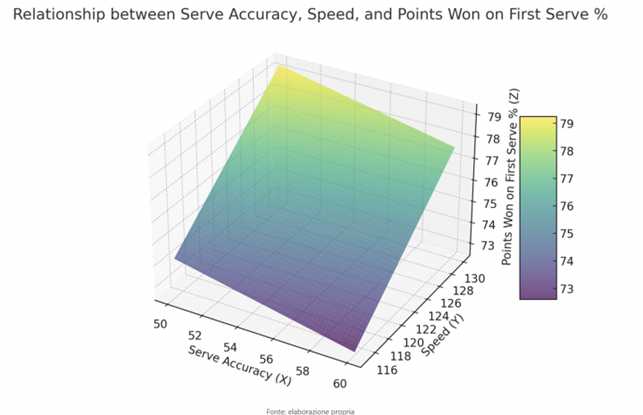

Of course, there are many other variables that explain the yield on the first serve, but the inverse correlation between serve speed and precision is not bad, and generally leads us to say that serving at 125 mph with an accuracy of 52 cm, combined with an average quality in return shots, guarantees an untouchable performance of 80% of points won on the first serve. If the quality is that of Sinner’s serving machine, even less will suffice.
Continuing with the quality of the service shown by Sinner, another data point that deserves further exploration is that of unreturned serves, where the opponent fails to return the serve back into play. Here too, Jannik performed exceptionally well, with aces and opponents’ missed returns bringing home an impressive 40% in 2023 and an exceptional 42% in 2024. Remember, in tennis, variations of 1% can make the difference between a solid top ten player and a Grand Slam title winner. To put it in perspective, the ATP average is 38%.
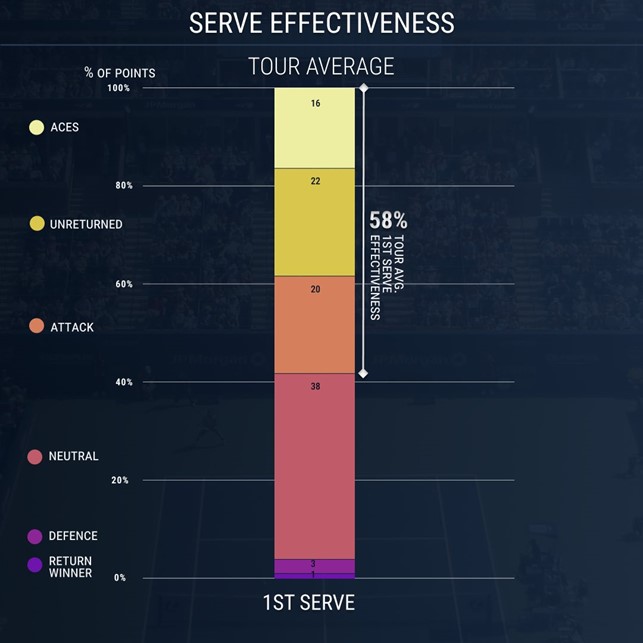
Finally, to conclude the chapter on the serve, one last piece of data, which we’ve kept in reserve for the most deserving who have persisted in reading up to this point; do you know what the percentage of first serve balls on break points was in 2023? And in 2024? Well, we’ll present it to you in a table, and we’ll add nothing more:

In 2023, when serving on break points, the first serve landed much less than usual in crucial moments. In 2024, however, the Italian did not lose his composure at all, serving as if it were any other point… not bad at all.
Performance in rallies: in this case, we rely on [metrics developed by TDI and TennisViz, which obviously carry the ATP brand](https://www.atptour.com/en/news/insights-introduction); (bonus: if you happen to watch a match on ATP TV, these advanced metrics are just a click away, in the stats section of the App).

It’s notable how Jannik has leveled up both in his ability to convert points where he had the advantage (conversion score) and in managing to seize the initiative from opponents when they were in a favorable position during the rally (steal score). Lastly, the final data point: from the baseline, with the current form of Jannik, it’s tough to come out on top, and if we consider his aptitude for turning defense into offense, the puzzle for his opponents is almost unsolvable. Indeed, this explains the overwhelming 56% of points won from the baseline, significantly above the ATP average. This data also finds an explanation in a significant tactical adjustment, the more pronounced use of the down-the-line backhand variation. The backhand crosscourt is already a comfort zone for Sinner, which he can comfortably use to extract points, like a boxer working his opponent with jabs; if we add that now Sinner is also able to find the down-the-line solution at the right moment, again, it spells trouble for his opponents. In 2023, Sinner hit 19.5% of his backhands down the line, while in 2024 this percentage rose to 31.4% in the Rotterdam tournament. A change that helped him tip the scale further in his favor in baseline battles.
Comments
Djokovic Reminds Everyone In Turn And Around The World Who Is The Tennis Boss
Published
5 months agoon
21/11/2023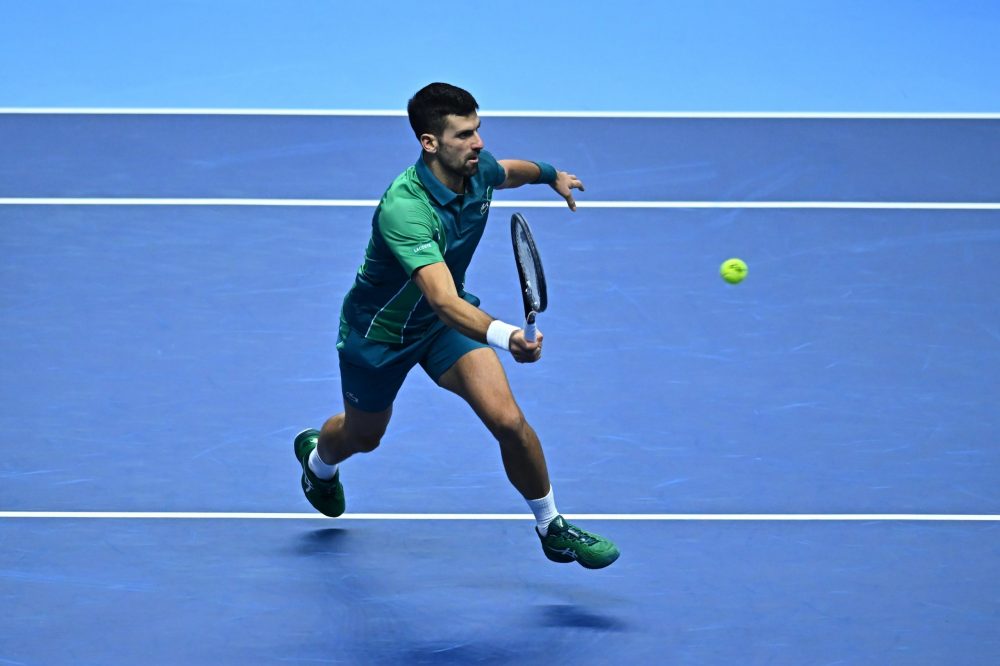
The season ending Nitto ATP Finals is a singularly sparkling showcase for the top eight players in the world, a tournament that ends the season in men’s tennis on a high note with so many sparkling matchups, and a celebration of how stirring a spectacle the indoor game can be. With two round robin groups comprised of four players each leading into straightforward, single elimination semifinals and final, there is an intrigue surrounding the festivities at this tournament that does not even remotely resemble any other event.
This time around in Turin, the round robin produced some majestic tennis, and the keynote performer was none other than the swashbuckling Italian Jannik Sinner. He kept Italian hopes exceedingly high all week long, taking all three matches he played in the round robin before eclipsing Daniil Medvedev for the third time in a row to claim a place in the most significant final of his career. Among those he defeated in round robin play was none other than Novak Djokovic. Sinner was riding high, raising expectations all across his nation, and making everyone stand up and pay close attention to him and his exploits.
But what too many learned observers failed to recognize was that Djokovic is the ultimate big match player. He can turn himself into an entirely different player when he has a mission on his mind and whenever he feels the need to redefine himself to his fellow players and the tennis world at large. Moreover, after winning two of his three round robin clashes but being pushed to three sets in all of them, he was dissatisfied with his level of play and determined to prove to himself that he could win a record breaking seventh ATP Finals crown and perform at the loftiest heights when the stakes were greatest and the pressure was on.
Embed from Getty ImagesThe tennis that Djokovic unleashed over the weekend in Turin across the semifinal and final may very well have surpassed anything he put on display in winning three of the four majors in 2023. It was almost inarguably the best he has summoned all year long because he clearly wanted to conclude the 2023 tournament campaign with a flourish and use his triumphant run in Italy to roar into the year ahead with force, conviction, persuasion and the utmost of confidence.
Given the opportunity to avenge his loss to Sinner five days after they had met in the round robin, Djokovic was well aware that he had been too conservative in that initial appointment. Both players won 109 points in that memorable round robin duel, but it was Sinner who had been unmistakably bolder on the biggest points, particularly down the homestretch. Djokovic recognized swiftly that he would need to make amends if he got a second chance against Sinner, and he did just that.
From the outset in the final, Djokovic was outhitting Sinner from the backcourt, serving with uncanny precision and purpose, taking matters entirely into his own hands, and playing the match on his own terms. He was setting the tactical agenda.
Above all else, the ease with which Djokovic was holding serve was creating a tension in Sinner that was almost tangible. The first game was thematic. Djokovic held at love, releasing a pair of aces in the process. On his way to 2-1, the Serbian produced two more aces and held at 15. Sinner established a 40-15 lead in the fourth game but a serve-and-volley combination did not do the job. Djokovic beat him with a topspin lob winner before the 22-year-old lost the next two points with errant forehands, although he should have challenged the second one because his forehand clipped the baseline.
At break point down, Sinner overcooked another forehand, sending it wide, allowing Djokovic the luxury of a 3-1 lead. Djokovic surged to 4-1 at the cost of only one point and then advanced to 5-2 at love with an ace, a service winner and two more unreturned serves. Serving for the set at 5-3, Djokovic did not allow Sinner a point as he closed out the set 6-3 very commandingly. In five service games, he won 20 of 22 points, connected with 73% of his first serves, and aced Sinner seven times. He made two unforced errors over the course of nine games.
Embed from Getty ImagesThe 36-year-old built on his momentum by breaking Sinner at love to start the second set before holding at love to reach 2-0, sending out his eighth and ninth aces in that game. By the time a masterful Djokovic reached 0-30 in the third game, he had won 14 consecutive points and was threatening to break the contest wide open. Later in that third game he had three break points but Sinner erased the first with an unanswerable 115 MPH second serve down the T. Djokovic had a golden opportunity on the second but his forehand down the line passing shot which had Sinner beaten cold bounded off the net cord and landed wide. He had a third break point that Sinner saved with an ace. After three deuces, Sinner tenuously held on.
Djokovic was unswayed, holding at love for 3-1 with three straight aces followed by a service winner. But he was given his sternest test yet in the sixth game, falling behind 15-40. And yet a service winner out wide saved the first break point and another effective first serve coaxed a backhand return error from Sinner, enabling Djokovic to make it back to deuce. He took the next two points confidently for a 4-2 lead.
Once more, Djokovic made a concerted effort to get the insurance break. With Sinner serving in the seventh game, there were eight deuces and Sinner did not hold until his seventh game point after Djokovic had two break points that he squandered with a sliced backhand error and a miscalculation on a Sinner forehand that landed on the sideline and left the Serbian unprepared. Sinner secured that arduous hold with an ace, leaving Djokovic apprehensive about another missed chance.
Serving with new balls at 4-3, Djokovic trailed 0-30, but eventually held from deuce, finishing off that somewhat shaky hold with his 13th ace. Now Sinner was serving to stay in the match in the ninth game and, despite an ace for 30-30, he was broken at 30 on his lone double fault of the match. Djokovic emerged victorious 6-3, 6-3. His triumph can be attributed to two primary virtues: the quality of his first and second serves, and his blend of firepower and consistency from the backcourt. He was hitting his forehand considerably harder than Sinner, which is no mean feat. He won 38 of 46 points on serve altogether, most notably 29 of 32 on his first serve. And he never allowed Sinner to get comfortable from the backcourt, keeping the Italian at bay with pace and persistence off both sides.
Djokovic was no less dazzling in his dismantling of Alcaraz in the penultimate round. Every time they had met prior to this collision, Djokovic and Alcaraz had played matches that would not be classified as one-sided. Not one of their four previous duels had ended in straight sets. Alcaraz took their first contest in a final set tie-break on clay in Madrid 18 months ago. The Serbian and the Spaniard split two spectacular sets at Roland Garros this year in the semifinals before Djokovic prevailed 6-3, 5-7, 6-1, 6-1. Alcaraz had started cramping late in the second set.
In the Wimbledon final back in July, Alcaraz succeeded in five sets and then they did battle in the final of Cincinnati with Djokovic saving a match point in the second set tie-break before pulling out a gratifying victory in a third set tie-break. That spellbinding battle lasted nearly four hours.
Most members of the tennis cognoscenti were expecting another razor thin margin between the two best players in the world at Turin, but for the first time Djokovic defeated Alcaraz handily on the fast indoor hard court. It did not look like a romp in the early stages. Djokovic was down 15-40 in the opening game when Alcaraz drove a two-hander wide off the net cord. Djokovic’s 116 MPH second serve down the T put him in charge of the next point and Alcaraz missed his second shot off the forehand. A service winner and an ace took Djokovic out of danger and into a 1-0 lead.
But Alcaraz was serving up a storm. He made 14 first serves in a row and took 12 of 16 points on his delivery en route to 3-3. Djokovic had worked his way out of another difficult service game at 2-2 that went to two deuces as Alcaraz blasted away freely off the ground. But the 20-year-old Spaniard lost his range off the backhand in the eighth game and Djokovic broke him for a 5-3 lead. The Serbian then held at love with an ace out wide to seal the set 6-3.
Djokovic was pummeling away at Alcaraz’s backhand and keeping the Spaniard ill at ease and off balance. He broke for 2-1 in the second set, held easily for 3-1 and nearly gained another break in the fifth game. Alcaraz’s saved a break point and then found renewed inspiration when Djokovic served in the sixth game. Three rallies in that game lasted between 20 and 24 strokes. The Spaniard showed off his astounding speed and shotmaking versatility. At 15-15, Djokovic had Alcaraz on a string, moving him from corner to corner, controlling the rally ruthlessly. But Alcaraz somehow recovered, shifted from defense to offense and stunned the approving audience and his opponent with a forehand winner. He advanced to 15-40 with a forehand volley winner down the line.
Clearly the Spaniard believed he was about to break back and change the color of the contest. But Djokovic had other notions. A service winner down the T took him to 30-40. Now he had to defend steadfastly, but he did just that. On the 23rd shot of a fierce exchange, he angled a forehand crosscourt passing shot into the clear. From deuce he put away a forehand swing volley and then hit a service winner to reach 4-2. Djokovic was not complacent. He went full force after another service break in the seventh game and achieved it. After a 24 stroke exchange, he elicited a forehand error from the Spaniard to reach 5-2, and then easily served it out in the following game to finish off a satisfying 6-3, 6-2 victory over his chief rival all year in the battle for No. 1. Despite getting 84% of his first serves in and serving ten aces, Alcaraz was trounced by a top of the line Djokovic.
Embed from Getty ImagesThe Djokovic who toppled Alcaraz and Sinner was not playing the same brand of tennis in the round robin stage of the tournament in Turin. He had come into the event knowing he needed only one round robin victory to seal an eighth year-end No. 1 world ranking. That was his overriding goal. Pete Sampras concluded six consecutive (and total) years at No. 1. Roger Federer, Rafael Nadal and Jimmy Connors all ended five years at the top. Djokovic was determined to separate himself even more from those luminaries in this department, and he was well aware that he could add to his record for time spent at the top of the rankings to 400 weeks following Turin. Federer is in second place at 310 weeks.
So Djokovic took great pride in his dual achievement of eight year end finishes at No. 1 as well as 400 weeks. He secured that honor by taking his opening round robin match over Holger Rune 7-6 (4), 6-7 (1), 6-3. He was far from his zenith against the 20-year-old Dane. He did play a disciplined opening set tie-break but the second set tie-break was dismal from Djokovic’s end of the court. Even with Rune struggling physically in the final set and seemingly spent, Djokovic was below par but from 2-2 he took three games in a row. At 5-3 he held at love to close out the account.
The next day Djokovic was honored by the ATP with an on court ceremony for his No. 1 accomplishment. He returned the following evening to face Sinner, who had already easily dismissed Stefanos Tsitsipas in straight sets. Djokovic played good but not great tennis in this match, while Sinner was feeding off the crowd, performing magnificently. At 4-5, 15-30 in the first set, Sinner was fortunate when Djokovic inexplicably attempted a sliced backhand when he could have driven that shot. He missed it long. In the next game, Djokovic led 40-0 but Sinner swept three points in a row. At deuce, Djokovic double faulted and Sinner took the next point with calculated aggression. The Italian had the break and closed out the set unhesitatingly. Djokovic was twice down a mini-break in the second set tie-break but he rallied to win it seven points to five.
Sinner broke Djokovic to lead 4-2 in the third set but the Serbian retaliated in the following game. It all came down to a tie-break and Sinner was unstoppable. He won the first five points and pulled away to defeat Djokovic for the first time in four career appointments despite 20 aces from the Serbian. Sinner won 7-5, 6-7 (5), 7-6 (2).
Matters got complicated in that group. Tsitsipas retired with a back injury after trailing 2-1 in the first set against Rune. He was replaced by Hubert Hurkacz. Djokovic recouped from his loss to Sinner and beat the big serving Polish player 7-6 (1), 4-6, 6-1. Hurkacz did not miss a first serve in the tie-break but Djokovic was tremendous on his returns. The only point he lost was on his own serve at 6-0. But Hurkacz broke Djokovic once in the second set and was unyielding on his delivery. Not until the third set did Hurkacz’s level recede. His first serve percentage dropped to 45% with only ten first serves landing in the box. Seven of those ten were aces. He had 24 for the match.
Djokovic finished round robin play with a 2-1 record but only a 5-4 winning record in sets. That meant Rune could join Sinner in the semifinals from the Green Group if he beat the Italian that evening. Djokovic’s fate was in Sinner’s hands. Some wondered if Sinner might want to spare himself a potential rematch with Djokovic in the final by deliberately losing to Rune. But they failed to recognize that Sinner is a professional through and through. He was not going to give anything less than his best. He has a lot of integrity.
Sinner crushed Rune in the first set but dropped a tight second set. His back seemed to be bothering him. But he battled on gallantly in the third set and fended off a break point against him at 3-4. A body serve from the Italian drew an errant down the line backhand return from the Dane. Sinner came through 6-2, 5-7, 6-4 and saved Djokovic from missing out on the semifinals. Sinner finished first in the Green Group and Djokovic second.
Embed from Getty ImagesIn the Red Group, Daniil Medvedev had won his first two matches over Andrey Rublev and Sascha Zverev, prevailing in straight sets both times. His semifinal place was assured. But the other semifinalist from that group was up in the air. Alcaraz had lost a hard fought and well played encounter against Zverev 6-7 (3), 6-3, 6-4. It was perhaps Zverev’s best performance of the 2023 season. But then he lost to Medvedev. On the last day of round robin competition it all came down to Alcaraz confronting Medvedev with victory assuring him of a semifinal slot. More confident after beating Rublev in straight sets, Alcaraz avenged his U.S. Open loss to Medvedev with a 6-4, 6-4 triumph. The Spaniard kept Medvedev completely at bay with his capacity to attack at opportune times. He never lost his serve.
And so Alcaraz won the Red Group and Medvedev finished second. Medvedev was determined to prevent Sinner from ousting him for the third time in a row after winning their first six head to head contests. But Sinner was too composed. In the first set Sinner was up 40-0 at 1-1 but had bail himself out from break point down before holding on. Then Medvedev led 40-0 at 1-2 but lost his serve primarily on surprising mistakes. Sinner held from 0-30 in the fifth game and moved on to 4-1. Sinner took that set comfortably in the end, but Medvedev served with clinical efficiency in the second set.
He then left the court to get help from an ATP physiotherapist for an apparent ailing hip. Sinner rolled in the third set as Medvedev emotionally imploded. The Italian won 6-3, 6-7 (4), 6-1. A nation anticipated a significant breakthrough for the world No. 4. But their dream was hit by a hard reality. Nonetheless, he was the best player outside of Djokovic in the second half of 2023. He made it to his first major semifinal at Wimbledon, won the Masters 1000 title in Toronto and then added tournament wins in Beijing and Vienna before his runner-up showing in Turin.
History was largely on Djokovic’s side in the final. In the 47 previous editions of the ATP Finals when played under the round robin followed by a single elimination semifinals and final round format, there had been 26 times when a player who lost a round robin match went on to win the tournament. Djokovic had done it twice himself. In 2008 he was defeated by Nikolay Davydenko in the round robin but he came back to beat Davydenko in the final. Seven years later, he was beaten by Federer in the round robin but stopped the Swiss Maestro in the final.
Moreover, Djokovic had time to accept his round robin loss to Sinner and move on, and was surely motivated by the opportunity to get some revenge. He wanted that record of seven titles at the ATP Finals that he had previously shared with Federer, and was delighted to win his seventh title in twelve tournament appearances this season. The last year he won as many as seven tournaments was back in 2016. This was also his 98th career ATP Tour singles championship and so Djokovic is now only five titles behind Federer and eleven in back of the leader Connors.
History is still the driving force that fuels Novak Djokovic, and he won’t shy away from any pursuit that will enhance his legacy and enlarge his reputation. No wonder Djokovic was saying in Turin that he considers 2023 to be one of his finest seasons. This was the fourth year in his shining career that Djokovic has won three majors. It was the third time he reached all four Grand Slam finals in a season. He wraps up this season with a pair of Masters 1000 titles and the fifth biggest tournament of them all— the ATP Finals—backing up his stellar record at the Grand Slam events. After losing to Alcaraz in the Wimbledon final, Djokovic closed his season with victories in his last four tournaments—Cincinnati, the U.S. Open, Rolex Paris Masters and ATP Finals— as well as winning 22 of his last 23 matches as he heads into Davis Cup this week. Conversely, Alcaraz did not win a tournament after taking his sixth title of the season at Wimbledon.
For Djokovic to be so prolific at 36 is nothing short of stupendous. Djokovic should have another two prodigious years ahead of him. I remain convinced he will win at least three or four majors over the next couple of seasons, and he will push hard to break the Connors tournament titles record. Sooner or later his supply of ambition will diminish, but, for at least another few years, Novak Djokovic will remain the game’s central figure, the premier match player in tennis and a champion of enduring excellence who seems in so many ways to be getting better with the passing years as he zeroes in on his chief targets with a ferocity and purpose that no one else can match.
Embed from Getty ImagesComments
Seventh Paris Bercy Triumph is the Most Rewarding for Djokovic
The confidence of Novak Djokovic is high heading into the ATP Finals in Turin.
Published
5 months agoon
07/11/2023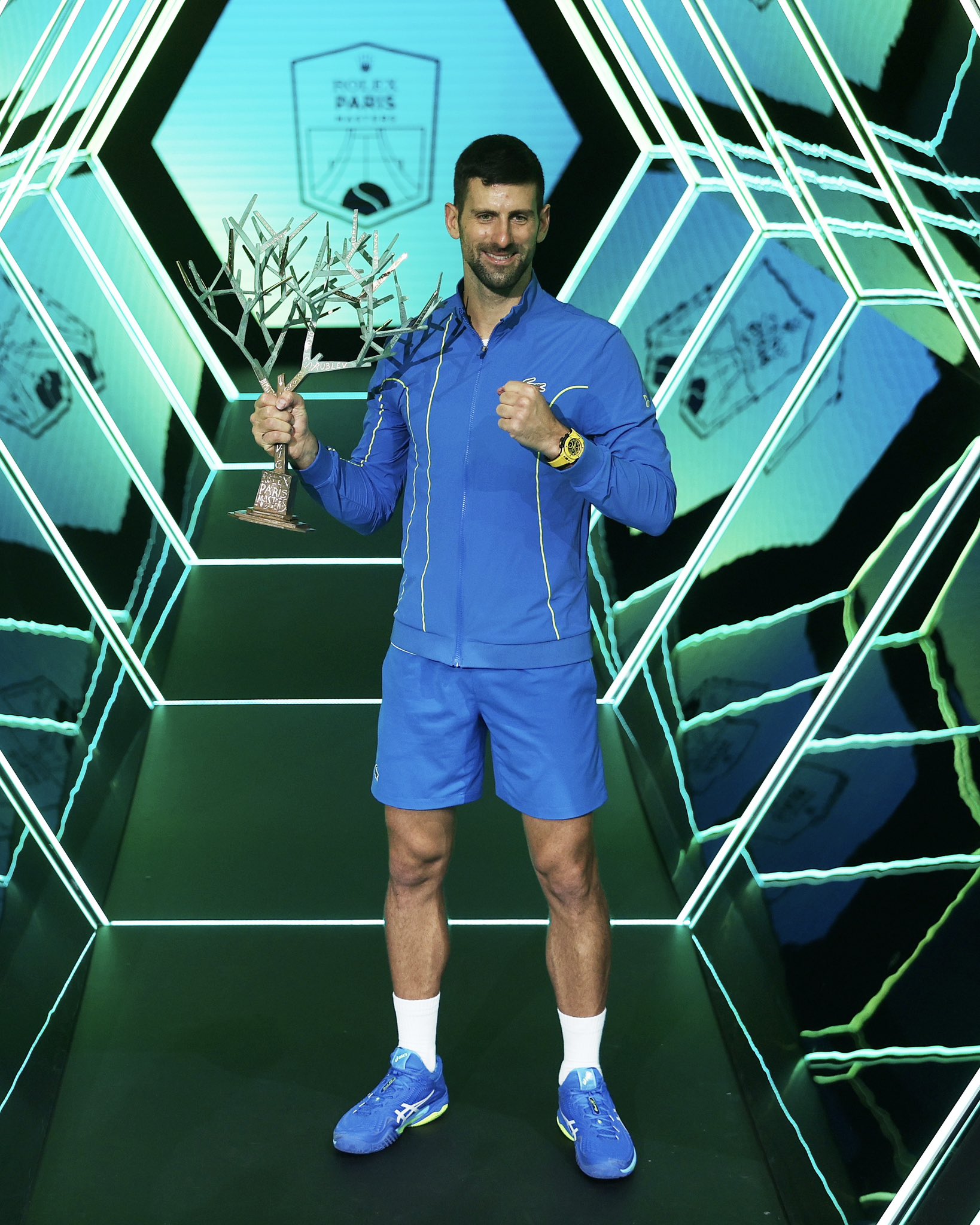
He had not played a tournament since securing his 24th major at the U.S. Open on September 10— or a match of any kind since representing Serbia in Davis Cup the following week—using that time to rest his body, ease his mind and zero in on the arduous path ahead. He was probably not expecting too much from himself at the Rolex Paris Masters after being away from the competitive world of professional tennis for such a long time.
As if he did not have enough to worry about upon his return to the ATP Tour, he then was hit hard by a stomach ailment midweek in Paris that complicated matters considerably.
Be that as it may, Novak Djokovic somehow survived a harrowing week in France and ultimately collected his 40th Masters 1000 crown, his 97th career singles championship, and his sixth title of 2023 in only eleven 2023 tournament appearances. Despite obvious discomfort and a string of three excruciating encounters leading up to the final that pushed him to his absolute limits and tested comprehensively not only his physical durability but, even more so, his emotional stability, Djokovic moved past his difficulties and found victory deservedly in the end. The biggest weapon in tennis these days is his incomparable mind.
Djokovic’s final round triumph over a revitalized Grigor Dimitrov was straightforward and largely devoid of suspense because the Serbian was immensely disciplined and resolute. He did not face a break point in nine service games across two sets, dissecting his adversary 6-4, 6-3 with his usual pride and professionalism. From start to finish, Djokovic was determined to finish this piece of business swiftly and methodically, and he did just that.
In the early stages, Djokovic was somewhat apprehensive, falling behind 15-30 in the second game on his serve and trailing 0-30 when he served at 1-2. But he met those moments with his usual clarity and conviction. In the latter of those games, he was particularly impressive. On the 0-30 point he opened up the court with a backhand crosscourt approach that set up a scintillating backhand angled drop volley winner. He followed with a service winner down the T, coaxed an error off the Dimitrov backhand slice, and then took his fourth point in a row by sending Dimitrov side to side with controlled aggression until he elicited an error.
At 3-3, Djokovic made his move. His returns in that entire seventh game were remarkable. At 30-40, Dimitrov sent a first serve wide to the Djokovic backhand that should have been a point winner. Yet Djokovic lunged to his left, blocked the return back low and short, and provoked a netted a topspin backhand from Dimitrov.
Djokovic had the break for 4-3 and made it count. He held at love with two service winners and an ace to reach 5-3. Serving for the set two games later, Djokovic advanced to 40-30 but netted a forehand off an effective Dimitrov backhand slice. But then Djokoivic profited from a pair of errant backhand slices from his opponent, and the set belonged to the cagey favorite 6-4.
At 2-2 in the second set, Djokovic made a solid backhand return on break point that Dimitrov mistakenly thought he could control with a topspin backhand down the line reply. That shot landed long, and allowed Djokovic to move in front 3-2. He held at love for 4-2 with an ace out wide in the ad court and then had a break point for 5-2 that Dimitrov erased with a gutsy inside out forehand forcing an error.
The 32-year-old Bulgarian held on gamely in that seventh game, but Djokovic was unflustered. Serving at 4-3, 30-30, he released consecutive first serves down the T and Dimitrov could not get either one back in play. Djokovic moved to 5-3, and then determined that it was closing time, opening the ninth game with a scorching backhand down the line winner. Dimitrov took the next two points but double faulted for 30-30. Now Djokovic went for the inside out backhand second serve return winner and made it. On match point at 30-40, he looped a forehand inside out and drew the error he wanted.
Djokovic had prevailed 6-4, 6-3. The 36-year-old connected with 67% of his first serves, winning 81% of those points. He won 11 of 16 second serve points (69%). He played the match on his terms, setting the tempo he wanted, keeping Dimitrov at bay from beginning to end, defeating his old rival and friend for the 12th time in 13 career meetings. The week had concluded almost the way it started, when Djokovic commenced his campaign for his seventh Rolex Masters Paris title with a routine 6-3, 6-2 victory over Argentina’s Tomas Etcheverry in 84 efficient minutes.
But that appointment on Wednesday November 1 was followed by three rugged skirmishes that Djokovic had to navigate with the greatest of care just to survive.
The first of these battles was against the 27-year-old Tallon Griekspoor. In two previous duels with the Dutchman, Djokovic had triumphed without much trouble. But this time he drifted dangerously close to defeat against the world No. 21.
Djokovic surged to a 4-1 first set lead and then served at 4-2, 40-15. He challenged a call on the sideline, believing the ball had landed wide. It hit the line. Griekspoor broke back and had a new lease on life. He won five games in a row to steal the set, with Djokovic looking more and more listless with each passing moment. He called for the tournament doctor, who gave him a pill for his ailing stomach.
He remained almost zombie-like for a while, but gradually found a trace of intensity—if no more than that. At 4-4, Djokovic held on from 15-40 with some clutch serving. They travelled to a tie-break, and here Djokovic at last looked like the essential Djokovic, taking it seven points to two with regal authority.
And yet, the tension was not over. Although Griekspoor was not teeing off and lacing second serve returns with the same relish he had earlier, he still was fighting fiercely. Griekspoor made it back to 4-4 in that final set when Djokovic double faulted at break point down in the eighth game. The crowd cheered heartily after that point, with some perhaps wanting more tennis and others hoping for the Serbian’s demise. Djokovic egged them on by raising his arms defiantly while smiling almost ironically, knowing that he thrives so often when confronted by an acrimonious audience. Djokovic proceeded to run off eight consecutive points, completing a 4-6, 7-6 (2), 6-4 win and moving into the quarterfinals.
Waiting for Djokovic there was the young fellow who had upended him in the final a year ago on the same court. In fact, by virtue of that win in Paris one year ago, Holger Rune established himself as the only player ever to beat Djokovic from a set down in a Masters 1000 final. Djokovic has won 31 of 32 finals at that level over the course of his career after winning the opening set.
Moreover, Rune had toppled Djokovic again in another three set match on the clay at Rome earlier this year. They had not met since. Needless to say, but Djokovic does not take kindly to losing against anyone three times in a row. Another point of intrigue surrounding this quarterfinal confrontation: Djokovic’s former coach Boris Becker was now in Rune’s corner.
Rune had endured a terrible slump this year after moving into the top five in the world and reaching the quarterfinals of Wimbledon. He had back problems and went into a disconcerting tailspin that no one could have anticipated. Before he joined forces with Becker in Basel, Rune had lost eight of his last nine matches. His swagger was gone. He was not the same player we had witnessed over the past year.
But, with Becker by his side, Rune made it to the semifinals of Basel, and then played well on his way to the showdown with Djokovic in Paris. His creativity on the court, his willingness to get to the net commandingly, his bold second serve speeds— all of these qualities make Rune a compelling performer. Djokovic seemed to be feeling better than he had the day before against Griekspoor, but remained subdued.
Nonetheless, he was in good form, as was Rune. The first set was settled by one break in the twelfth game with Rune serving at 5-6. He reached game point for a potential tie-break but Djokovic persisted and reached set point. He came forward, punched a forehand volley low, and then put away a backhand swing volley from close range that landed on the line.
Djokovic sealed the crucial opening set 7-5. After an early exchange of breaks in the second, he then reached match point with Rune serving at 4-5. But the 20-year-old Dane audaciously sent an impeccably placed and unstoppable first serve down the T to save it. They went to a tie-break and improbably Djokovic was the player who faltered. For only the sixth time in 33 tie-breaks this year he was beaten, but it was more a case of self inflicted wounds from Djokovic (including a double fault at 1-3) than Rune’s shining play that allowed the Dane to prevail seven points to three.
At the end of that sequence, however, Rune was cramping. Djokovic took a bathroom break and when play resumed Rune was not unduly inhibited. But with some expert use of the lob and his customary court sense, Djokovic broke early in the third set and never looked back, serving beautifully to win 20 of 23 points on his delivery including five aces. In two hours and 54 minutes of hard fought and high quality tennis, Djokovic was victorious 7-5, 6-7 (7-3), 6-4.
His next assignment was a semifinal against Andrey Rublev. Djokovic had won four of their five previous confrontations including a come from behind four set victory in their most recent battle at Wimbledon.
Rublev has undoubtedly played the finest tennis of his career in 2023. He won the Masters 1000 title at Monte Carlo over Rune and was runner-up to Hubert Hurkacz in the Shanghai Masters 1000 tournament. His explosive backcourt game featuring one of the biggest forehands in the sport— along with a significantly improved backhand that he takes down the line more frequently— have made Rublev a more formidable player across the board
But the Rublev who showed up to play Djokovic indoors in Paris was combining power, purpose and reliability with a persuasiveness he has perhaps never exhibited before. It was breathtaking to observe the tennis he produced on this occasion. When Djokovic broke Rublev with some stunning running forehands in the opening game, it looked like business as usual for the world No. 1.
But the 36-year-old wasted four game points in the second game and an unbending Rublev broke right back. From that juncture, Rublev had the upper hand for most of the first set. By the middle of that set, Djokovic was clearly suffering to some degree with the stomach issue, looking wan and moving with much less alacrity than normal. With Rublev walloping his ground strokes ruthlessly and hardly missing despite unleashing one gargantuan shot after another, Djokovic was on his heels and fighting just to stay afloat.
At 3-4 in that first set, Djokovic held on from 0-40 with a stream of aces and service winners and at 4-5 the scenario was similar. In that tenth game he was down 0-30 but an ace got him back on track and he swept four points in a row to reach 5-5. Rublev was not perturbed. With Djokovic serving at 5-6, 30-30, Rublev’s return set up an outright winner and then Djokovic surprisingly tried a drop shot off Rublev’s return. It did not even reach the net. Set to Rublev, 7-5.
Once more, Djokovic found himself in a precarious place, down a set against a top five player who was playing arguably the match of his life. In the second game of the second set, Djokovic was down break point but he released a service winner down the T to bail himself out and advanced to 1-1. At 2-2, he had Rublev down 0-40 but the Russian held on with the help of a net cord winner at 30-40. He then saved another break point at 3-3 with a forehand inside out winner.
Twice in the latter stages of that hard fought set, Djokovic had to serve to stay in the match. He was three points from losing at 4-5, 15-15 but defended magnificently out of his forehand corner to reach 30-15, connected immaculately with a forehand inside in winner for 40-15, and aced Rublev out wide to hold for 5-5 at 15. Serving at 5-6 he was down 0-15 and three points from defeat again, but took four points in a row once more with immense poise under pressure.
Now they settled the second set in a tie-break. The players were locked at 2-2 when Djokovic went to work as only he can in these critical sequences. He coaxed an error from Rublev to get the mini-break for 3-2 and then defended with extraordinary determination as Rublev had him scurrying all over the court. Djokovic worked his way back to a neutral position and then employed a short and low backhand chip to draw Rublev in and make him miss.
It was 4-2 for an inspired Djokovic. A service winner down the T took him to 5-2. After an ace from Rublev made it 5-3, Djokovic took an excellent first serve wide from Rublev and rifled his return crosscourt for a dazzling winner. At 6-3, he closed that tie-break out with an ace out wide in the ad court. The 7-3 tie-break triumph was classic Djokovic.
And yet, he was hurting. On the first point of that tie-break, Djokovic had lunged to reach for a backhand return off a big serve from Rublev, aggravating his back. Djokovic took a bathroom break and then called for the trainer, who rubbed his back. Fortunately, he was able to pick up where he left off and keep elevating his game.
Nevertheless, Rublev was not wilting— not in the least. But he was under siege by an opponent who was no longer believing he could lose.
With Rublev serving at 1-2 in the third set, Djokovic had 15-40 and double break point but he netted a backhand crosscourt passing shot. Rublev held on with tenacity. Djokovic was creating scoreboard pressure on Rublev but also holding swiftly and confidently, winning 24 of 29 points on serve in that final set. Rublev later served at 4-5, 0-30, but missed only one first serve on the next four points and closed out that game with an ace for 5-5. Djokovic held at love for 6-5 with an ace and a perfectly packaged serve-and-volley point in that game, and now Rublev served for the second time to stay in the match.
This time, he did not succeed.
Djokovic was defending stupendously in this game. He outmaneuvered Rublev from the baseline twice to reach 0-30 before Rublev put away an overhead. But Djokovic was unrelenting now. A deep backhand down the line forced an error from Rublev to make it 15-40. Cruelly, Rublev double faulted long off the net cord going down the T on the next point and victory belonged to Djokovic 5-7, 7-6 (3), 7-5 in just over three hours of spellbinding tennis. I put that match right up there among the top five men’s contests of the year. Outside of the majors, this was the best with the exception of Djokovic’s 5-7, 7-6 (9-7), 7-6 (7-4) win over Alcaraz in the Cincinnati final.
Undoubtedly the week was almost all about Djokovic and his seventh title run at the Rolex Paris Masters. But not entirely.
Dimitrov deserves high marks for finishing his season with such an inspired run and rising again into the top 15 in the world. After he concluded 2017 at No. 3 in the world when he won the ATP Finals, he has fought in vain to stay in that territory while simultaneously setting high standards. But this year he has played his best tennis since 2017 and arguably his game is at an even higher level.
He toppled Alcaraz on his way to the semifinals of Shanghai, which in some ways set the stage for the Bulgarian’s excellent run in Paris. He started his journey in France with a three set win over Lorenzo Musetti. In the second round he avenged a hard fought loss he had suffered in Vienna against No. 3 seed Daniil Medvedev. Aside from the Djokovic-Rublev contest, this was the most compelling match of the week.
Dimitrov took the first set from Medvedev but dropped the second before gaining the upper hand again in the third. He served for the match at 5-3 and had four match points, but failed to get a first serve in on any of them. Later, at 5-6, Medvedev faced two more match points, managing to escape. But Dimitrov refused to lose his composure or abandon his game plan. He raced to a 5-0 final set tie-break lead and closed it out seven points to two for one of the most impressive victories of his career. Dimitrov won by scores of 6-3, 6-7 (7-4), 7-6 (7-2).
In the round of 16, Dimitrov toppled Alexander Bublik 6-2, 6-2 before ousting Hurkacz 6-1,4-6, 6-4 as the Polish player lost his outside chance to qualify as one of the elite eight players for Turin. But Dimitrov was not done with his exploits.
He played a tremendous match against Stefanos Tsitsipas in the semifinals. The Greek stylist had won six of his seven career contests against Dimitrov, but this was a week when the Bulgarian was in a different mindset and not preoccupied with the past. Dimitrov completely outplayed Tsitsipas in the first set and then had two break points at 4-4 in the second. But Tsitsipas knifed a forehand volley into the clear and saved the other with a penetrating forehand off a net cord return from an unlucky Dimitrov.
Tsitsipas was too good in winning the second set in a tie-break and then had four break points at 1-1 in the third— the only ones he would create all match long. Dimitrov held on steadfastly. That final set also went to a tie-break and in this one Dimitrov was out of this world. He produced four winners in that sequence including three sparkling passing shots, and took the match by the same scoreline as his Medvedev encounter: 6-3, 6-7 (7-1), 7-6 (7-3). Dimitrov was outclassed by a better player in the final, but the fact remained that he had ended his year in style. The last time he had been in a Masters 1000 final was six years ago in Cincinnati when he took the title over Nick Kyrgios.
Now the stage is set for the Nitto ATP Finals in Turin, which starts on November 12. The defending champion Djokovic will be the clear favorite as he chases a seventh crown in that season ending tournament for the top eight players. Carlos Alcaraz— beaten in the second round of Paris by the Russian Roman Safiullin 6-3, 6-4 after being up a break in both sets—will be trying to break out of a slump after dealing with two injury issues recently. He has not won a tournament since his stirring five set, final round clash with Djokovic at Wimbledon.
The two other main contenders will be world No. 3 Medvedev—the 2020 champion—and world No. 4 Jannik Sinner, who is coming off his greatest season yet and looking forward to performing commendably for his home country’s fans. Rounding out the field are Rublev, 2019 champion Tsitsipas, 2018 and 2021 champion Sascha Zverev, and Rune.
It is an excellent cast with some enticing matchups. Djokovic is, of course, the man to beat. But based on recent form I must give Sinner the next best chance. Medvedev has not won a tournament since Rome. Neither he nor Alcaraz will be that confident going into the tournament, although that could change during the week. But Djokovic is riding high after another significant tournament win, and Sinner will be confident after stopping Medvedev in two finals this autumn at Beijing and Vienna. Although he dropped out of the Rolex Paris Masters after winning his opening match over Mackenzie McDonald at the ungodly hour of 2:37 AM, Sinner will be rested for Turin and should be ready to go.
Djokovic will have a week to recover from the rigors of Paris, and some of the pressure on him to defend will be removed. With a 1490 point lead over Alcaraz in the ATP Race. Djokovic has almost a lock on an eighth year-end No. 1 ranking, so he should be able to keep his mind on the task at hand in Turin and, with an uncluttered mind, give himself the best possible chance to succeed in Italy. I can’t wait for this year end festival to unfold.

‘Big Things Will Happen’ – Emma Raducanu Hails Reunion With Childhood Coach

Ons Jabeur Admits Injury Setback Was Tougher Than Expected

Stefanos Tsitsipas beats Sebastian Ofner in Barcelona to extend his winning streak

Roberto Bautista Agut wins his milestone 400th match on the ATP Tour

Martina Trevisan beats Naomi Osaka to reach the second round in Rouen

EXCLUSIVE: Q&A With Simona Halep’s New Coach Carlos Martinez

Jannik Sinner Wins Maiden Miami Open Title To Secure New Career-High Ranking

Dominic Thiem Addresses Injury Concern After Claiming First Win Of 2024 In Estoril

Injured Andy Murray To Miss Two Clay Events With Return Date Uncertain

Steve Flink: Jannik Sinner Will Be World Number One By The End Of The Season

VIDEO EXCLUSIVE: Danielle Collins Triumphs In Miami As Elena Rybakina Pays The Price For Three Set Marathons

VIDEO EXCLUSIVE: Who Is The Better Player Between Jannik Sinner And Carlos Alcaraz?

(VIDEO) Miami Open Women’s Draw Preview: Is Iga Swiatek Unbeatable?

(VIDEO) Miami Open Men’s Draw Preview: Can Jannik Sinner Bounce Back?

(VIDEO) Carlos Alcaraz Reigns Supreme At Indian Wells, Continues Rivalry With Jannik Sinner
Trending
-

 Latest news3 days ago
Latest news3 days agoRising Star Mirra Andreeva Teams Up With Wimbledon Champion Martinez
-

 ATP3 days ago
ATP3 days agoCarlos Alcaraz In Doubt For Madrid Open Title Defence
-

 Focus1 day ago
Focus1 day agoRafael Nadal Takes Positives From Barcelona Exit Against Alex De Minaur
-
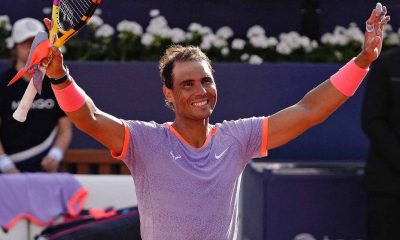
 Latest news2 days ago
Latest news2 days agoRafael Nadal makes a winning come-back against Flavio Cobolli in Barcelona
-

 Hot Topics2 days ago
Hot Topics2 days agoRafael Nadal Plays Down Expectations After Barcelona Win
-
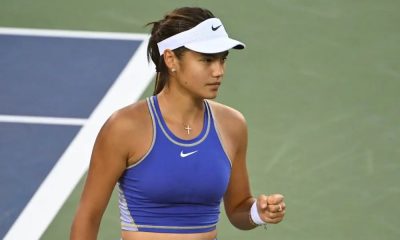
 Hot Topics20 hours ago
Hot Topics20 hours ago‘Big Things Will Happen’ – Emma Raducanu Hails Reunion With Childhood Coach
-
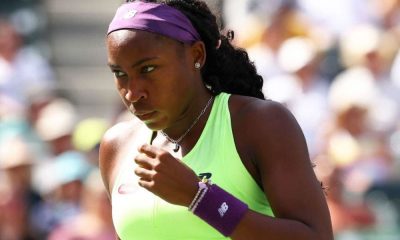
 Hot Topics2 days ago
Hot Topics2 days agoCoco Gauff Targets First Clay Court Title Since 2021 Ahead Of French Open
-
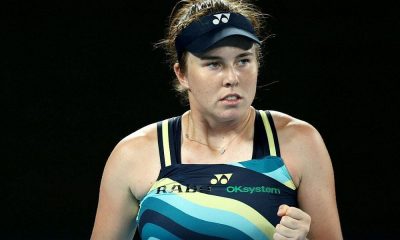
 Latest news2 days ago
Latest news2 days agoLinda Noskova cruises past Jelena Ostapenko in Stuttgart to clinch her third top 10 win

